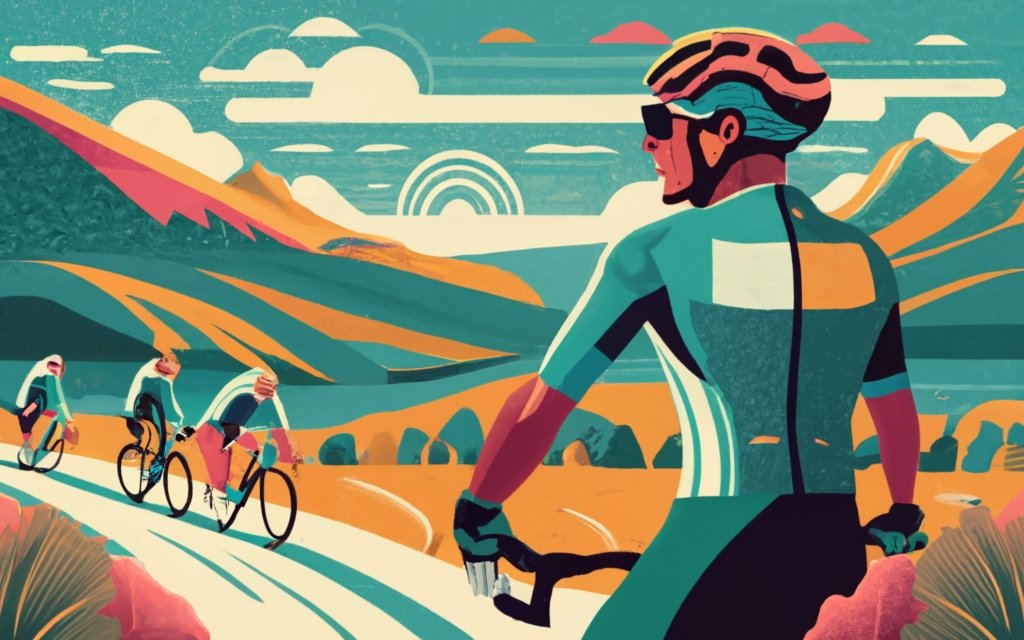Introduction to Cycling Apparel
Selecting and utilizing proper cycling apparel engineered specifically for riding has always been crucial in the ongoing quest to enhance the sport’s comfort, performance and safety. Unlike regular everyday attire that cyclists could wear for casual rides, purpose-designed cycling apparel is tailored in materials, construction techniques, ergonomic patterning and specialized features to address the unique physiological demands, biomechanical needs and situational hazards encountered while riding a bike. The specialized cycling clothing keeps muscle groups properly warmed up and joints loose to prevent injury even on long rides, while strategically placed cushioning pads combat chafing and skin irritation caused by the body’s motion on the saddle during hours of pedalling. The performance-oriented cuts, stretchy technical fabrics and close fit work together to minimally impede natural cycling motions while eliminating flapping excess material that would otherwise increase aerodynamic drag and make riders less efficient. Visibility-enhancing and safety-focused accents like reflective piping and panels integrated thoughtfully into cycling apparel provide riders with much-needed confidence that other road users can properly see them even in low light.
The importance of proper cycling apparel
The culmination of engineering and design distinct to apparel crafted solely for cycling translates directly into immense performance gains, injury prevention, improved comfort, and elevated riding enjoyment. Using cycling-specific garments allows riders to feel the difference from their first pedal stroke. It serves as a gateway into exploring just how much human optimization and achievement is possible on two wheels. Even for new cyclists, something as simple as a basic pair of padded bike shorts can open their eyes to how much proper gear can enhance the riding experience.
The different types of cycling apparel
The wide spectrum includes cycling shorts, jerseys, outerwear such as windbreakers and insulating layers, protective gear like specialized eyewear and footwear, various base layer options, and numerous cycling-specific accessories. Each category serves a specific purpose, like padded shorts combating chafing, jerseys with rear storage pockets or insulating jackets blocking wind, to work together in complement as a full cycling kit.
The benefits of wearing proper cycling apparel
The extensive benefits span boosted performance through tighter aerodynamic fits wicking away sweat, heightened safety via reflective visibility features woven into apparel prints, injury prevention thanks to specialized padding and supports in high impact zones, adaptable comfort across varied weather extremes or long distances aided by clever venting and layering combinations, and elevated confidence and focus enabled when cycling-specific design allows forgetting about gear and instead immersing fully into the riding experience.
The role of cycling apparel in performance
Cycling apparel is tailored specifically for the demands of riding with design considerations like minimizing drag through form-fitting cuts, allowing unimpeded leg extension and arm motion via panelling and stretch fabrics, and keeping muscles warm and joints mobile through insulation and temperature regulation. Stabilizing loads through reinforced pockets and compression areas yields measurable performance improvements, including faster speeds, extended stamina, and increased power compared to everyday attire.
The impact of cycling apparel on comfort
Innovations in materials, anatomical tailoring and padding strategically placed in contact zones combine to provide all-day comfort when riding for hours. Moisture-wicking fabrics keep skin dry, variable elasticity allows freedom of movement, dense gel-infused foam supports and protects sensitive tissues from vibration, and a seamless, integrated foot-to-torso design moulded specifically to riding position eliminates irritating chafing and discomfort that impedes enjoying the ride.
Choosing the Right Cycling Shorts
The humble cycling short represents the most essential bike gear spanning casual rides into ultra-competitive racing disciplines. Adding a quality padded cycling short transforms rider comfort and endurance compared to standard apparel on any bicycle saddle.
The importance of padded cycling shorts
Incorporating a dense foam pad within the shorts called a chamois provides critical protection and shock absorption for soft tissues that otherwise endure pressure and vibration during hours of pedalling body weight on a narrow saddle. A chamois’s friction-preventing and load-distributing qualities keep riders comfortable mile after mile.
The different types of cycling shorts
Types range from the snug standard road cycling short with durable multi-density foam padding stitched directly into casual baggy mountain biking shorts that incorporate inner liner shorts with padding to multi-panel anatomic race shorts made with variable thicknesses of perforated foam matched specifically to high-pressure points.
How to choose the right size and fit
Ideal cycling shorts feel like a second skin, hugging the contours of legs and core without restrictive pressure or loose bunching leading to chafing. Stand with feet shoulder-width while wearing shorts to assess fit feel in riding stance.
The role of chamois in cycling shorts
This dense padded insert positioned where seat contact occurs determines the shorts’ comfort and protection. It should be shaped to fully cushion vulnerable soft tissues and nerves without awkwardly moving, bunching or restricting pedalling motion.
Tips for maintaining and caring for cycling shorts
Hand wash cycling shorts with non-detergent soap after each ride without harsh scrubbing, rinse thoroughly and air dry fully to prevent bodily salt and bacteria from degrading delicate fabrics and chamois while maximizing garment lifespan through gentle treatment.
The Role of Cycling Jerseys
On par with padded shorts in kit necessities, the cycling jersey is core cycling apparel optimized specifically for riding through combination of ergonomic fit, sweat-wicking technical fabrics, convenient features, and design touches boosting comfort on and off the bike.
Introduction to cycling jerseys
Cycling jerseys differ from casual tops or performance shirts with bike-specific traits like form-fitting cut for aerodynamics, durable fabric able to withstand hours of saddle friction, rear stash pockets, and zippered air vents.
The benefits of wearing a cycling jersey
A cycling jersey’s snug fit minimizes flapping to reduce drag, while specially woven, quick-drying materials keep the torso drier. Full-length zip opening allows adjustable ventilation. Rear pockets handily carry ride essentials.
The different types of cycling jerseys
Styles span short sleeve, long sleeve, insulated for cold, fully perforated for heat, casual, relaxed fit and race-ready super aero. Fabrics include merino wool, reflective, compression, waterproof or lightweight mesh, depending on conditions and disciplines.
How to choose the right size and fit
Aim for a performance-oriented contour hugging fit across shoulders and torso without restrictive bunching when riding. Ensure sleeves don’t bind arms fully outstretched and length provides lumbar coverage.
The features of a good cycling jersey
Top attributes include 3+ rear stash pockets, full zipper for adjustable aeration, anti-odour technologies, UPF sun protection, silicone hem gripper to prevent riding up, quality YKK zippers, and optionally integrated snack pouch pockets if ultra-endurance riding demands.
Cycling Apparel for Different Weather Conditions
Given cycling’s nature as an outdoor activity, adapting apparel choices to suit environmental riding conditions properly represents a key strategy in maintaining comfort, enjoyment and performance across changing meteorological or seasonal circumstances.
The impact of weather on cycling apparel
The materials, layers, venting, insulation, water protection, and construction techniques used in cycling apparel all directly influence its ability to keep extremities warm in the cold, cool during heat, dry under rain and moisture-wicking in humidity or sweat-inducing climates.
The different types of cycling apparel for different weather conditions
Hot, sunny weather calls for lightweight, moisture-wicking jerseys with mesh panels, short sleeves and open pockets for airflow. Cold, snowy conditions demand insulated, windproof jackets, water-resistant wool long-sleeve jerseys and tights, shoe covers and thick lobster claw gloves or mittens.
How to layer cycling apparel for maximum comfort
Correctly layering garments manage moisture, regulate body temperature, retain warmth, and maintain breathability. Base layers wick away sweat, mid-layers insulate, and external layers protect wind and water.
The role of windproof and waterproof cycling apparel
Windproof panels block chilling air penetration to retain warmth while preventing overheating. Water-resistant and waterproof breathable cycling jackets, vests, and shoe covers maintain riding comfort in wet conditions by keeping skin and feet dry.
Tips for choosing the right cycling apparel for different weather conditions
Check forecasts before rides. Test gear combinations in expected conditions. Pack removable wind vests, arm warmers, knee warmers and leggings to adapt to temperature fluctuations. Avoid bulky apparel that can restrict motion.
Customizing Your Cycling Apparel
The extensive options for applying unique customization and personal styling touches to cycling apparel allow riders to express their individuality and team spirit on the bike creatively.
The benefits of custom cycling apparel
Riders gain distinctive looks, unlike mass-produced apparel. Matching team kit designs build camaraderie. Coordinated custom attire reinforces brand identity for sponsored athletes.
The different types of custom cycling apparel
Nearly all forms of cycling apparel can get customized, including jerseys, jackets, shorts, tights, base layers, gloves, socks and caps. Garments are constructed using standard sizing.
How to Design Your Cycling Apparel
Many custom apparel companies provide online design studios for selecting colors, placing graphics, adding text elements and uploading logos while offering guidance. Custom painting directly onto apparel is also an option.
The process of ordering custom cycling apparel
First, finalize design concepts and budget with the company team. Next, choose fabrics, features like zippers and pockets, quantity of each item and size breakdown. Then, provide payment, finalize artwork and await sample creation and revisions before approving finished designs for production.
A table comparing different custom cycling apparel companies and their offerings
| Company Name | Custom Design Options | Fabric Quality | Pricing Range | Minimum Order Quantity | Lead Time | Additional Services |
| Velocitex | Full custom designs | High-end | $$-$$$ | 10 pieces | 4-6 weeks | Embroidery, Rush Orders, |
| Eco-friendly fabrics | ||||||
| GearGlide | Custom graphics | Mid-range | $-$$ | 5 pieces | 3-5 weeks | Sublimation, AeroFit |
| technology, Discount bundles | ||||||
| SpeedSprint | Limited customization | Entry-level | $ | 20 pieces | 4-8 weeks | Design templates, Basic |
| templates | alterations | |||||
| AeroThreads | Full custom designs | High-end | $$$ | 10 pieces | 6-8 weeks | AeroFab technology, UV |
| protection, Multiple fabrics | ||||||
| ProPedal | Custom graphics | Mid-range | $$-$$$ | 5 pieces | 4-6 weeks | Worldwide shipping, Custom |
| accessories | ||||||
| CycleCraft | Full custom designs | Premium | $$$-$$$$ | 5 pieces | 6-10 weeks | Sustainable options, |
| ProFit guarantee |
Conclusion
The myriad forms of cycling-specific apparel spanning outerwear, jerseys, padded shorts, gloves and accessories deliver tangible benefits enhancing rider experience for all cycling disciples, from casual neighbourhood cruisers to competitive racers. By understanding the capabilities of performance-driven cycling garments and choosing apparel combinations purpose-built for the unique physiological and biomechanical demands of riding across changing environments or distances, cyclists can achieve their maximum potential of enjoyment, endurance and human optimization on two wheels. The extensive customization options additionally bring creative personal expression and team identity into the mix for yet another way specialized cycling apparel proves itself irreplaceable among athletes passionate about maximizing life on the bike.

